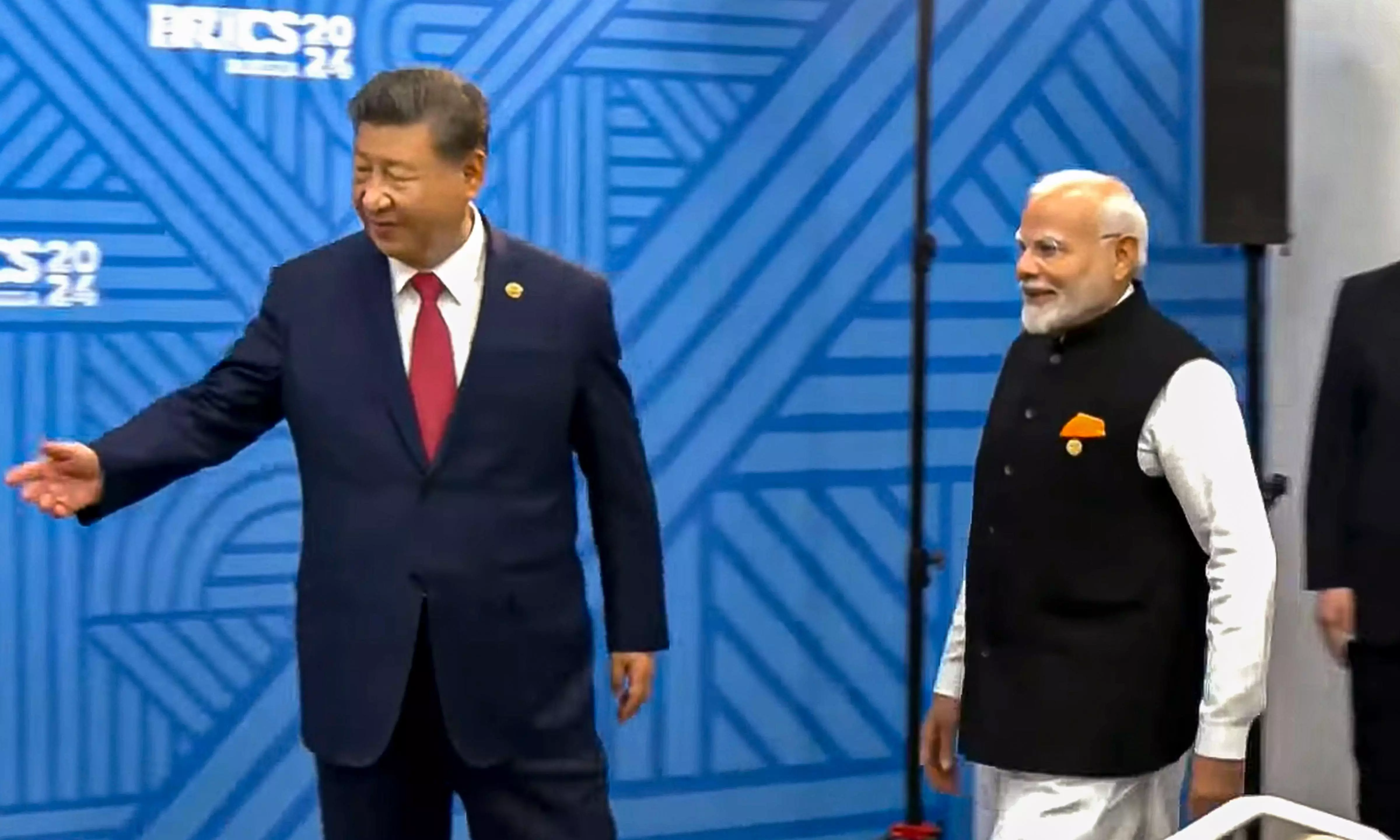Understanding Line of Actual Control and India-China Standoff

Kazan: Prime Minister Narendra Modi during a bilateral meeting with Chinese President Xi Jinping on the sidelines of the BRICS Summit, in Kazan, Wednesday, Oct. 23, 2024. (PTI Photo)
Prime Minister Narendra Modi and Chinese President Xi Jinping held the first formal bilateral meeting after the military stand-off between the two countries in 2020. The meeting was held on the sidelines of the BRICS Summit that both the leaders attended on Wednesday in Kazan, Russia.
After the clash in Galwan Valley, the ties between the two countries were affected badly.
In the meeting PM Modi said, "Excellency, I am happy to meet you, and like you mentioned, this is a formal meeting between us after five years. It is my belief that the importance of India-China relations is not just for the citizens of our two countries, but also very significant for peace, stability, and progress for the entire world."
"Excellency, We welcome the consensus reached on the issues that have arisen in the last 4 years along the border. It should be our priority to ensure there is peace and stability along our border. Mutual trust, mutual respect, and mutual sensitivity should be the basis our bilateral relations. Today, we have got an opportunity to speak about all these issues and I trust that we will hold these talks with an open mind and that our talks will be constructive going forward. Thank you," he added.
After the stand-off in 2020, it took four years of diplomatic and military level talks for both the countries to reach an agreement, and restore the status quo.
Both countries welcomed the move after they met in Russia.
Galwan Valley Clash
There are several other friction points between the two countries, namely--Despang, Gogra Hot Springs, Demchok, Galwan, and Pangong Tso.
In May 2020, Chinese troops blocked the Indian Soldiers from reaching the patrol points that they used to walk up to until then. This caused a military stand-off between the two countries and after the clash in Galwan Valley, both countries started reinforcements such as tens and thousands of troops, artillery guns to fighter jets and drones, and military hardware from tanks.
Then, both the countries started addressing talks on both military as well as diplomatic levels.
When the disengagement talks began, both countries created disengagement zones which are also called Buffer Zones. They created them in the areas of Galwan (where the Clash took place), Pangong, and Gogra Hot Springs.
Understanding Line of Actual Control (LAC).
After the uprising in China and the occupation of Tibet in 1959, China started making claims in regions that fell under Ladakh, which is an integral part of India.
Amid the 1962 Indo-Sino war, Chinese armed forces crossed the original border and later they had to withdraw. However, they never moved out of the Aksai Chin.
The original border between India and China was in the Aksai Chin region of Ladakh, which was later occupied by China in the 1962 war.
Post-war, a demarcation line that separated China (Chinese-controlled Indian territory) from India was called the Line of Actual Control.
( Source : Deccan Chronicle )
Next Story

